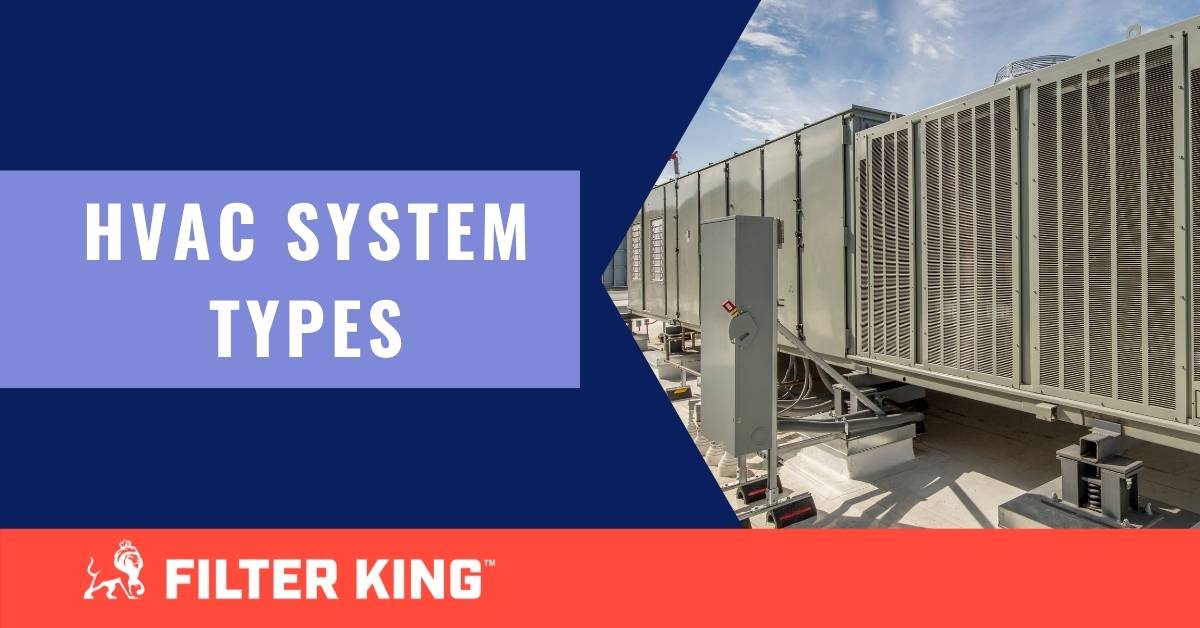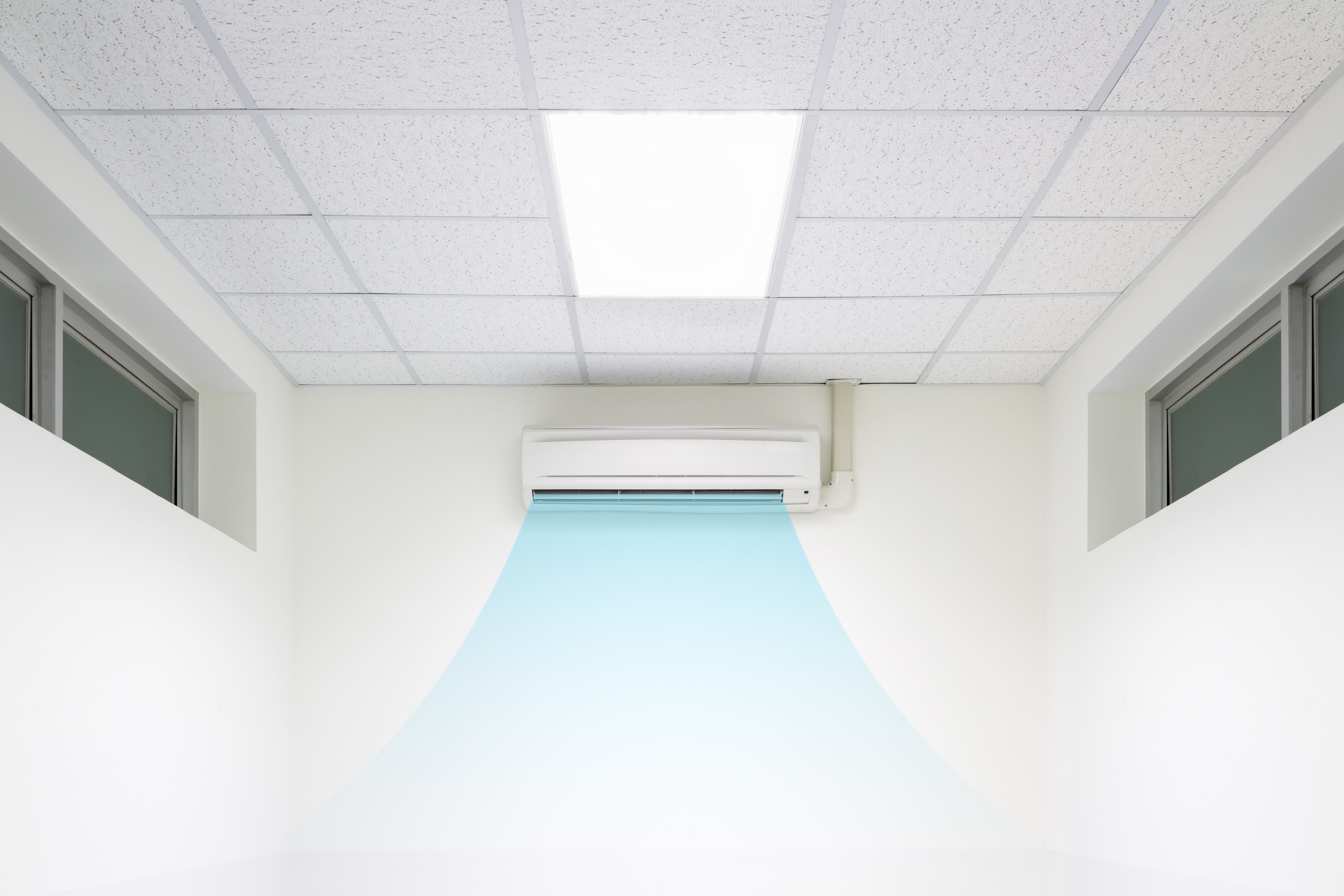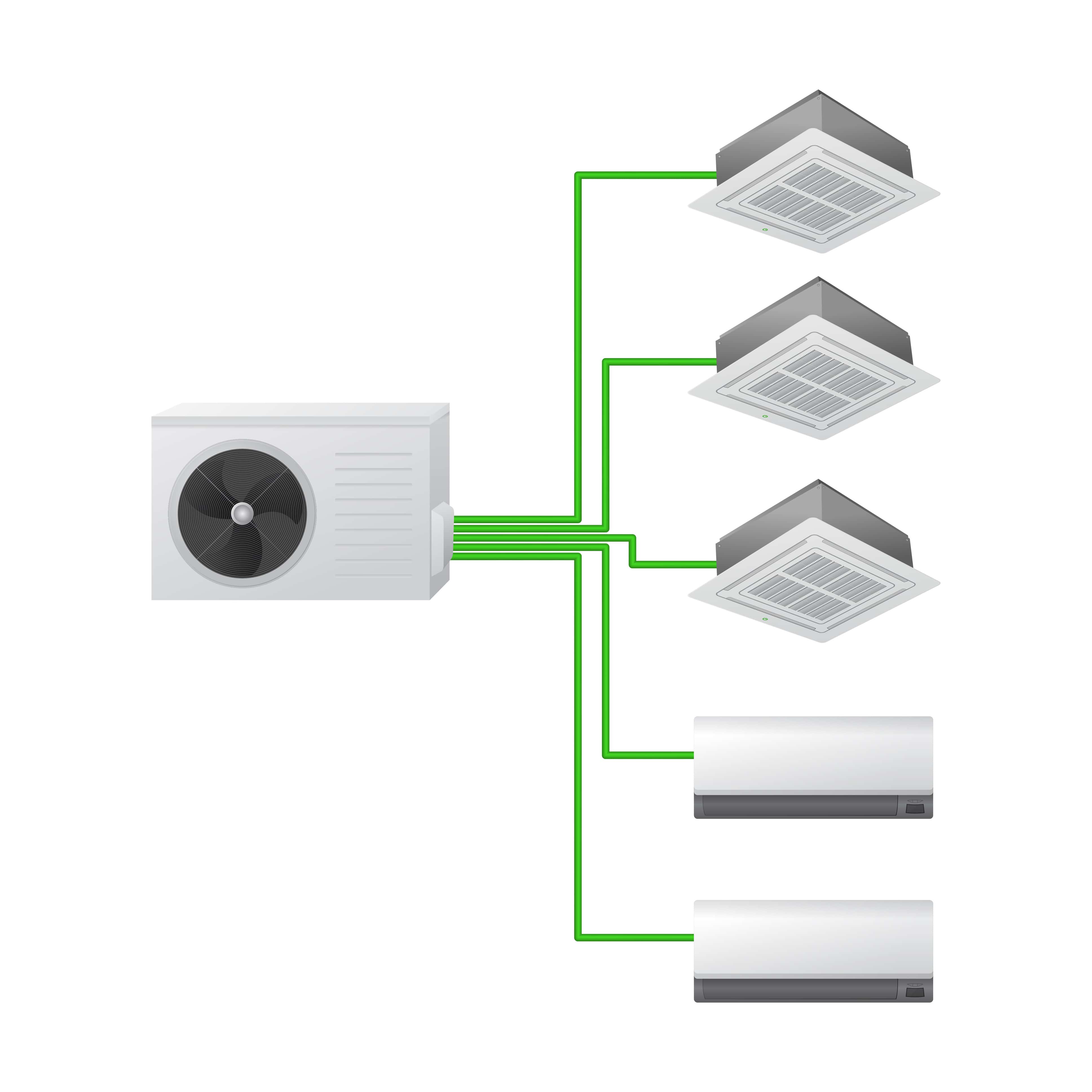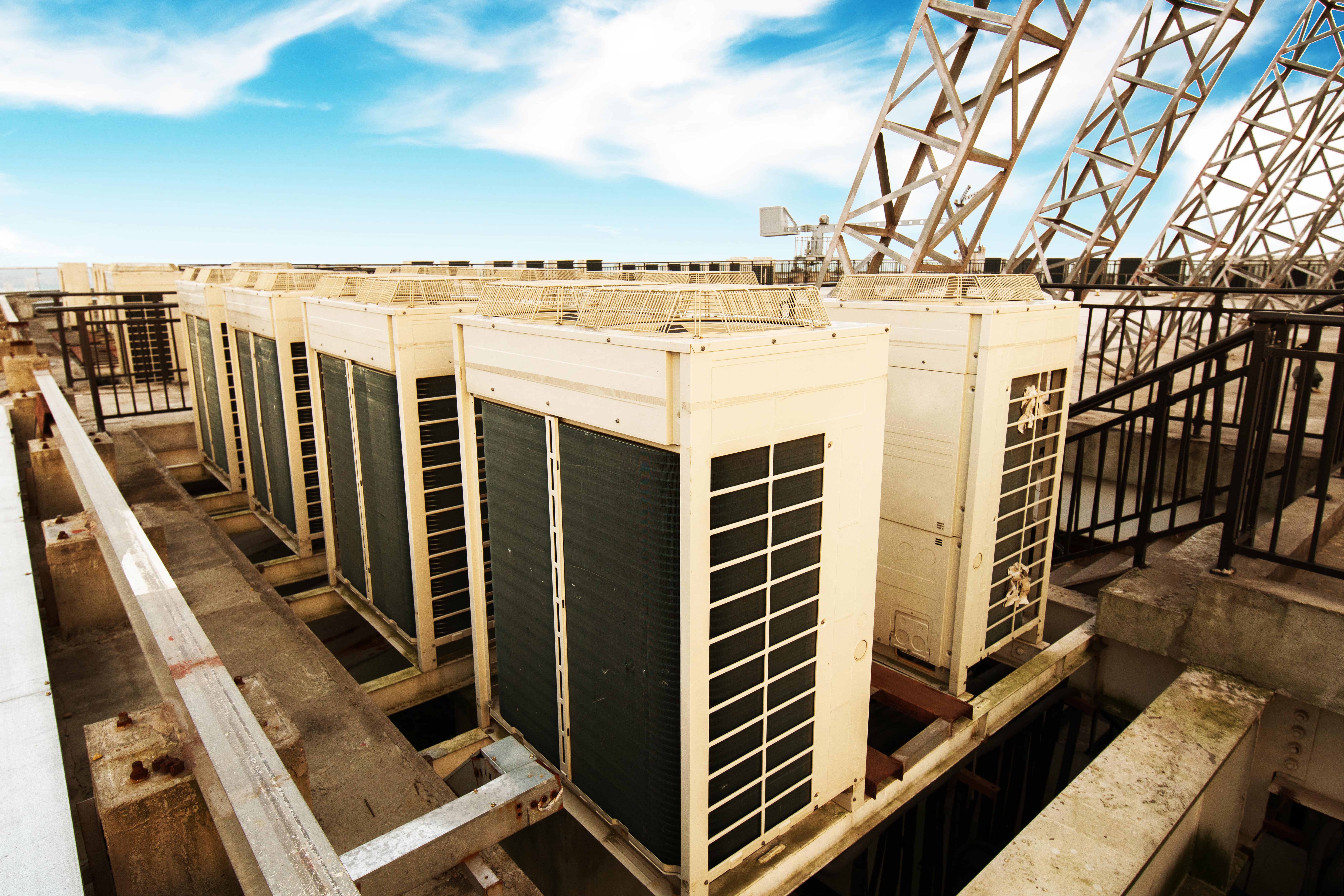What Are the Different HVAC System Types? Buyer's Guide to Common Units

Keeping air pure is important for our health. HVAC stands for heating, ventilation, and air conditioning. There are many different HVAC system types for commercial and residential use. HVAC systems pull the air from outside, ventilate it, and provide high-quality air inside your home or office building. The ventilation process replaces and exchanges the air within a space. This is what removes smoke, odors, moisture, dust, and other contaminants.
Common Types of Residential HVAC Systems
There are four main types of HVAC systems. Each type of HVAC system functions a little differently, but ultimately all will help keep the air pure in your home or office. They typically last between 15-25 years.
They all also have different filters. Our HVAC filter guide can help you determine which one you need.
Not sure which system is right for you? We will be breaking down how each one works so you can know before you have one installed.
Heating And Cooling Split Systems
Heating and cooling split systems are one of the most common types of HVAC systems. The system is split between a cooling unit and a heating unit. These are common residential HVAC system types because they can be installed in most houses.
They do not require specific needs or external factors for installation. However, they can take a long time to install. We recommend professional installation services for split systems.
The cooling system is typically outside. This part of the unit uses refrigerant, compressors, and an evaporator coil to cool your air. Outdoor units also use a fan to blow the hot air out. If you have ever seen a large air conditioner outside of a home, it was likely one of these heating or cooling split systems.
The heater in the split system uses gas to heat your home. The heater is typically placed in storage spaces, like a basement. A fan or evaporator circulates the air. A traditional thermometer regulates the temperature. This way, your house can stay at your ideal temperature.
Controlling Humidity Levels
Split systems usually include a humidifier and purifier. This keeps your home comfortable regardless of the weather outside.
You can use humidifiers and dehumidifiers to control humidity levels in your home. These can be helpful upgrades to your system if you live in a climate that is especially dry or humid.
Humidifiers and dehumidifiers that are built into air conditioners and furnaces can not be controlled. However, getting a separate accessory is a great way to control the levels in your home.
Other popular yet optional accessories for indoor air quality include:
- Air scrubbers attach to your HVAC unit’s ducts. They remove contaminants, air pollution, dust, and odors.
- Air purifiers are also installed in your HVAC unit’s ducts. These purify the air of harmful mold, bacteria, and viruses.
- UV lamps are also known as ultraviolet germicidal irradiation systems (UGVI). UGVI systems specifically target microorganisms. This includes bacteria, viruses, and mold. They use ultraviolet light to kill microorganisms. Some are installed in your HVAC duct. Others are placed near an air conditioner evaporator coil. This is to prevent mold from building up on the coil.
Central Air Conditioner and Furnaces
Central air conditioning systems are the most common type of cooling system. There is an indoor and outdoor component to these units. These are usually split systems but can sometimes be packaged systems.
Air conditioning systems typically include three key components: a compressor, condenser, and evaporator. The indoor evaporator unit has a refrigerant. It takes in the heat from the indoor air and cools it. The cooled air goes through ducts to move through your building. The outdoor compressor will cool the refrigerant so the cycle can continue.
Central AC units are typically installed with a furnace or other heating system. A furnace is the most common type of heating system. They can use heating oil, natural gas, or electricity to keep your home warm. If you have a central air conditioning unit, it will use the same ducts.
While central air conditioning units are not the most efficient, they are affordable and convenient for most homes or commercial buildings.
Hybrid Split System
These are very similar to heating and cooling systems. However, they are growing in popularity due to their energy efficiency. These systems use traditional ducts and thermostats similarly to the traditional split system. The main difference is the option for energy savings.
With hybrid heat systems, you can switch energy sources. You can select an electric-powered heat pump (which is quieter) or gas power. Your gas power will be a furnace that burns propane, fuel oil, or natural gas.
These systems can initially cost a bit more than a heating and cooling split system. But they offer great savings opportunities for winter. When it is cold outside, a refrigerant compound pumps heat from outside to inside your home. These are electric heat pumps. They take the heat out of the air, pull it in from outside, and then move it through your home.
If temperatures drop to below freezing, the furnace can then work in place of the electric-powered heat pump for efficiency. When the temperatures drop below 40 degrees, the furnace can also take over. This is because heat pumps are not as efficient.
Essentially, the hybrid heat split system acts as both an air conditioner and heater all in one unit. That is how it helps you save energy.
Duct Free or Mini-Split System

Duct-free or mini-split systems are great if you need more independent control for each part of your home or building. These units are mounted to a room’s wall. They are connected to an outdoor compressor.
Ductless mini-splits are common types of commercial HVAC systems. These are popular for hotels and similar venues, where different guests or tenants will control each room.
They are also typical for new residential expansions. Like if you install a new garage or room to your home.
Ductless mini-split systems can be expensive and require more maintenance. However, they do provide benefits for those needing more control. Duct-free systems also can help with energy conservation since you are only heating specified rooms instead of the entire building.
Packaged Heating and Air Conditioning System
Packaged heating and air conditioning systems are contained units. They are usually stored in a home, typically upstairs or in an attic. These both heat and cool the home.
These are compact, which provides a few perks.
- They are easy to maintain.
- They can be stored indoors if an outdoor space is unavailable.
- They work great for small spaces or homes.
The heating units on these are not as powerful as other systems. That makes these more prevalent in warmer climate areas.
Common Types of Commercial HVAC Systems
There are a few HVAC systems that are more specific for business owners. Some businesses may opt to use duct-free systems, especially for larger venues requiring individual control. However, there are other commercial types of HVAC systems that you will not typically find in a residential home. We will be explaining the differences so you can decide what works best for your business.
Single Split Systems
Single split systems are very popular with larger-sized businesses. They are commonly found in buildings that host multiple small offices, retail locations, and restaurants.
Single split systems usually include:
- An air conditioner that cools the refrigerant
- A furnace to convert refrigerant
- An evaporator coil that circulates the air
These are typically controlled with a thermostat or control panel. Each indoor unit is paired with an outdoor unit. They can cool one room at a time by using one compressor and one air outlet.
Their popularity is due to their convenience and affordability. These units are cheaper to install than a larger centralized system. Each unit is also self-contained, meaning the others will continue to work if one needs to be repaired.
Multi-Split Systems

A multi-split system lets you cool more than one room at once. You can have individual control over each room’s temperature. You can use a single compressor for up to five air outlets.
Multi-split systems work similarly to commercial single-split systems. However, there are a few differences that help you cut down on energy usage. The key differences in multi-split systems are:
- Each indoor unit does not need a corresponding outdoor unit. You can connect nine indoor units. Fewer units can be more compact and intrusive on your building.
- Multi-split systems have sensors for detecting temperature changes. They can make adjustments accordingly. These systems are cost effective. This helps you save energy since a lot of energy must be used whenever a compressor turns off.
- Multi-split systems have heat pumps. They move the heat to cool areas to help you save money on your heating bill.
VRF Systems
VRF stands for variable refrigerant flow. These are more ideal for mid-sized spaces. There are two types of VRF systems.
- Heat pump VRF systems can heat or cool your building. They can not do both at once. These are popular for buildings that have open floor plans.
- Heat recovery VRF systems are more common in buildings like hotels. These can heat and cool your building simultaneously.
Regardless of which type of VRF system you use, they are easy to install. They are known for being highly efficient and reliable. VRF systems do not have any ducts. This makes them more lightweight.
You can customize VRF systems for your specific needs. Each VRF system will likely vary from business to business depending on their scale and if they are using a heat pump or heat recovery setup.


